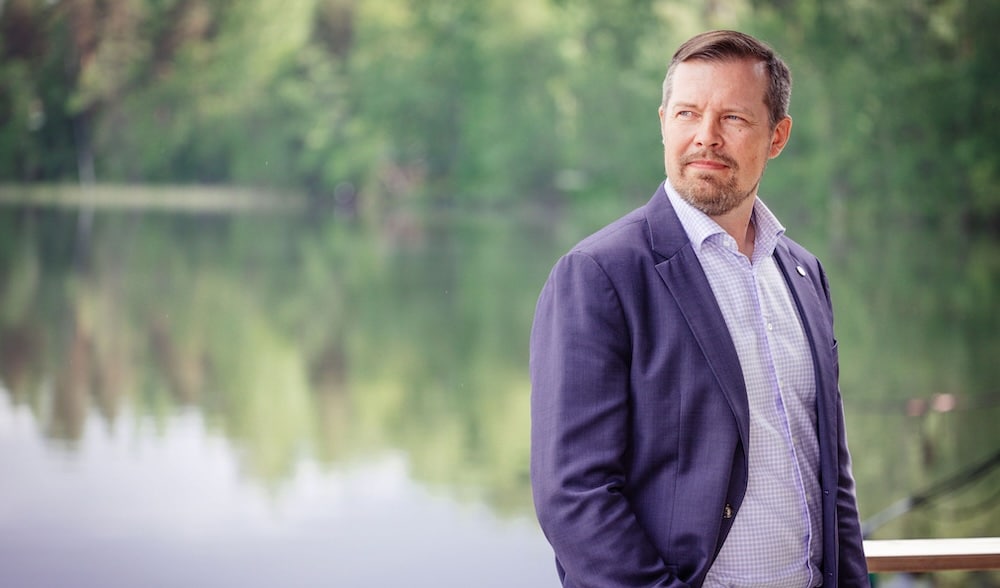Shipping Industry Embraces Decarbonization Through Innovation

The shipping sector is undergoing a significant transformation as it seeks to reduce carbon emissions, according to Mikko Kuosa, CEO of Finland’s NAPA. Rather than relying on a single groundbreaking solution, the industry is focusing on integrating existing technologies and customizing them for various vessel types and trade routes. This approach is expected to yield optimal results tailored to specific scenarios.
Innovative Technologies Drive Emission Reductions
Recent advancements in shipping technology are paving the way for a greener future. Short-sea shipping is witnessing the introduction of battery-powered vessels, while deep-sea operations are increasingly adopting hybrid systems, including wind-assisted propulsion. A recent simulation conducted by NAPA, Norsepower, and Sumitomo revealed that combining wind power with voyage optimization could lead to a remarkable 28% reduction in emissions.
Moreover, the design phase of shipbuilding is evolving with the use of digital twins. Shipyards such as HD Hyundai and Chantiers de l’Atlantique are leveraging these digital models to simulate real-world fuel consumption, hydrodynamics, emissions, and crew workflows before construction begins. This proactive approach ensures that new vessels are not only more environmentally friendly but also safer and better optimized for actual performance.
Integration of data, technology, and human expertise is crucial for advancing these innovations. Kuosa emphasizes that the future of shipping will favor solutions that seamlessly connect these elements. Artificial intelligence (AI) is already playing a pivotal role in NAPA’s offerings, enhancing performance monitoring by analyzing hull fouling, predicting Carbon Intensity Indicator (CII) ratings, and optimizing fuel efficiency. AI is also being utilized for ship safety and port navigation, improving cargo placement and compliance with safety regulations.
Collaboration and Data Hygiene Essential for Progress
While AI presents significant opportunities, Kuosa warns that the next major advancements will depend on improving data quality within the industry. The fragmented nature of shipping data systems currently hinders the potential for AI innovation. “Once our industry establishes strong data hygiene, the floodgates of innovation will surely open,” he states.
NAPA is positioning itself as a central player in this evolving ecosystem, offering tools that span from early design to daily operations. This continuous feedback loop allows insights from one vessel to enhance the design and performance of future ships. Kuosa notes that operational data from retired vessels can still inform the development of new fleets.
On the commercial front, the shipping industry is beginning to invest significantly in technology. Kuosa highlights that the cost of inaction is becoming more burdensome than the cost of innovation. Wind propulsion installations have doubled in the past two years, and voyage optimization has transitioned from a niche tool to a topic of board-level discussions. Digital logbooks are now being implemented fleet-wide, enhancing efficiency and compliance.
Internally, NAPA is adapting by recruiting new technical talent and focusing on customer-centric design. Externally, the company is fostering collaboration through NAPA Studios, its innovation platform, which partners with shipowners, shipyards, and financiers to tackle industry challenges collectively. Kuosa emphasizes that no single company can solve these issues in isolation.
Ultimately, the success of digital transitions in shipping hinges on alleviating the burdens faced by crews. Kuosa points out the increasing mental health challenges and workloads among seafarers, stressing that technology must simplify their tasks rather than complicate them. NAPA’s digital logbook has already saved operators like Anthony Veder 2,000 hours of administrative work per vessel annually, while smart checklists and digital tools are enhancing safety and reducing complexity.
As the industry moves forward, Kuosa asserts that the goal remains clear: to minimize manual effort, reduce compliance risks, and provide crews with the clarity needed to navigate the transition to a sustainable future.
